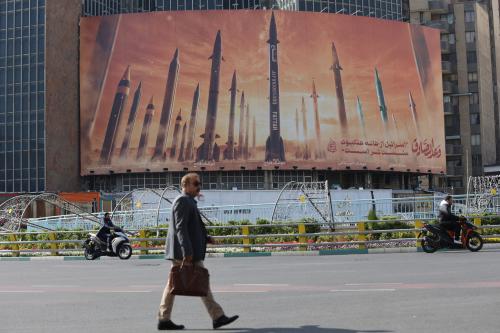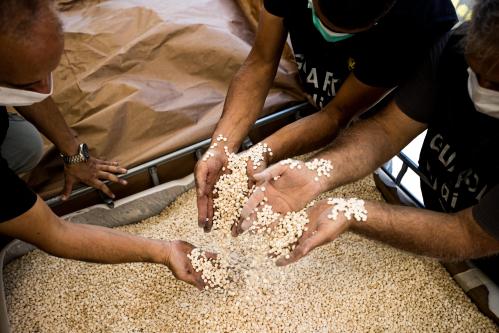Transcript of a video Q&A
With the Iraq Index we want to track a lot of indicators because a lot of information about counter-insurgency can be quantified. It doesn’t tell you the whole story, it doesn’t tell which trends are more important than others. But it provides the grist for some debate.
We want to just track the information in a straightforward way and help people try to interpret it. Some of us, especially myself as the senior author of this, we have our own views on Iraq and we write about them independently, but the goal of the index is to be as objective as possible with the data, admitting that the data cannot themselves tell us exactly where we’re heading because you always have some good news and some bad news. So you’re always going to have to figure out which categories to weight more than others, and therefore it’s always open to interpretation. We want to provide the raw material for that, not the answer.
You have to divide trends into three categories: security, economics, and then politics/public opinion. It’s just a way to help organize and make sense of all this data and all this information.
|
In security there’s almost no good news. Violence levels remain very high. There might have been some slight improvement, and I’ll come back to the surge in just a moment. But basically things are in very bad shape. The only encouraging information you can try to look for, apart from making a big deal of the fact Kurdistan is peaceful or a couple of the more rural regions of the Shia south are peaceful, is the training of the Iraqi security forces, which is progressing.
The economic news: the simple story is we’re treading water. And Iraq’s not poor, it’s not an impoverished country. It has a lot of oil revenues, oil prices have been high. Iraq gets a lot of foreign aid—Marshall Plan-like levels on a per capita basis—and so in these two ways there’s a lot of money flowing in, and a lot of efforts made obviously to build up infrastructure. But it’s not working due to the violence.
And you certainly have virtually no private sector investment from Iraqis or from abroad. And the middle class and professional classes have largely fled the country or gone to ground to avoid being kidnapped and killed. So the economy is muddling along.
Politics/public opinion for a couple years was the main area of hope in Iraq. Unfortunately the Iraqis are losing hope and they’re becoming very paranoid about each other; in other words, other sectarian groups. And they are not as optimistic about their country’s future as they once were. They still say they prefer things slightly over how they were under Saddam, but frankly the objective indicators of quality of life are a little worse today than they were in the last 5 to 10 years of Saddam’s rule.
In broad terms over the last 15 months, the number one story is the violence keeps getting worse and there is a civil war—I think by any reasonable definition of the term—the amount of violence and the amount of sectarian violence. In terms of the last month, a month and half during the surge, which is now almost halfway into effect in terms of US forces, additional, added to Iraq, I would say we have to look at trends in the violence, trends in car bombings, trends in how many Iraqi forces are actually showing up for the jobs they’ve been asked to carry out, trends in how much intelligence is coming in from the Iraqi people to help. And frankly, in most of these categories there is some glimmer of hope. To quote the New York Times op-ed that we wrote on March 18th, there is no proof of progress, but there is a glimmer of hope.
For more information, please see the current Iraq Index. (PDF)




Commentary
Q&A: Current Data on the Iraq War
March 19, 2007